
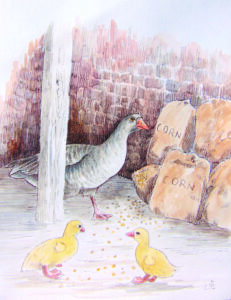 Vic Bearcroft tells us how he washes away any stress, by drawing animal pen and wash illustrations.
Vic Bearcroft tells us how he washes away any stress, by drawing animal pen and wash illustrations.
Art shouldn’t be stressful. I often have to remind myself of this as deadlines for exhibitions and books draw ever nearer. But, as with any business, a little stress can focus the mind.
On the other hand, when I’m doing work for myself, with no time pressure, there can be few things in life more relaxing and absorbing than art.
For me, by far the most mindful part of what I do is illustration, whether it be a sketch, print edition or part of a story, it always seems to take me back to happy memories reading classic illustrated fairy tales, from the likes of Hans Christian Andersen or one of my all time favourites – mainly because of a shared love of animals – Beatrix Potter.
So, as I ramble around our local lake or nature reserves or observe the character and behaviour of our own pets, I often dream up little stories. These stories can then be sketched, fully illustrated and sometimes written down for future use.
For finished illustrations I often use ink pens. I love detailing and hatch-shading with a pen. This in itself can be relaxing; hours passing by while I’m absorbed in shading various textures, all the time developing an unfolding story in my head.
The subjects of this particular step-by-step story illustration are Hurtle and Gurtle, our pair of Aylesbury ducklings, when they were just a couple of weeks old. The finished pen and wash illustration will be Uni-ball Pin fineliner pen, and watercolour with an appreciative nod towards dear Miss Potter.
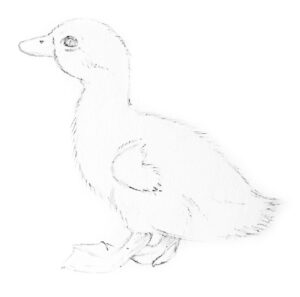 For my initial sketch, using a 2B pencil, I found a couple of photos which, when combined, gave an interesting composition, making me wonder what they’re up to: something naughty perhaps? Let’s see how the story develops.
For my initial sketch, using a 2B pencil, I found a couple of photos which, when combined, gave an interesting composition, making me wonder what they’re up to: something naughty perhaps? Let’s see how the story develops.
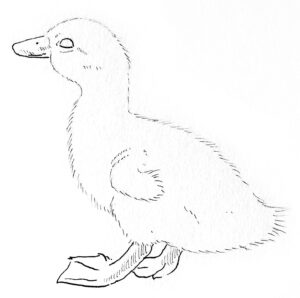 When it comes to inking over the pencil sketch, choose the nib size appropriate to your needs, taking into account textures of the subject, background, paper size etc. As this illustration is on A4 paper, and the ducklings are still very downy, I am using a 0.05 nib for the soft textures and shading, and a 0.5 nib for eyes, bills and feet. When inking the soft, downy outlines, be sure to leave gaps in your pen strokes; a hard, continuous outline could look too ‘cartoony’. Remember that you will be filling in the gaps with a watercolour wash later. Use light strokes with the pen (no pressing ) to create soft outlines and minimal line shading in the legs and bills. Once you have your drawing inked and dry, you can rub out the initial pencil sketch with a kneadable eraser.
When it comes to inking over the pencil sketch, choose the nib size appropriate to your needs, taking into account textures of the subject, background, paper size etc. As this illustration is on A4 paper, and the ducklings are still very downy, I am using a 0.05 nib for the soft textures and shading, and a 0.5 nib for eyes, bills and feet. When inking the soft, downy outlines, be sure to leave gaps in your pen strokes; a hard, continuous outline could look too ‘cartoony’. Remember that you will be filling in the gaps with a watercolour wash later. Use light strokes with the pen (no pressing ) to create soft outlines and minimal line shading in the legs and bills. Once you have your drawing inked and dry, you can rub out the initial pencil sketch with a kneadable eraser.
Want to keep reading? This article is exclusive to SAA members, where you’ll also enjoy a wide range of benefits, including:
Unlock these perks and more by joining today! Become a member.

VideoBurning Bright in Pastel with Vic Bearcroft |
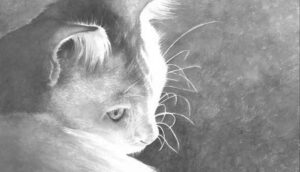
BlogWhite out of Black in Ink with Vic Bearcroft |
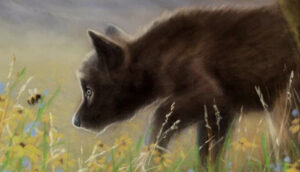
VideoClose Encounter in Pastel with Vic Bearcroft |
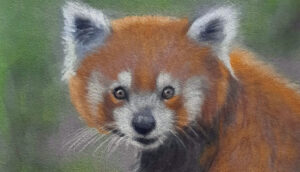
VideoRed Panda in Pastel with Vic Bearcroft |
This article is for members only. Please login or sign up to continue reading.
Notifications